#uk farm
Explore tagged Tumblr posts
Text






Llangollen, Wales
daniel_casson
7K notes
·
View notes
Text
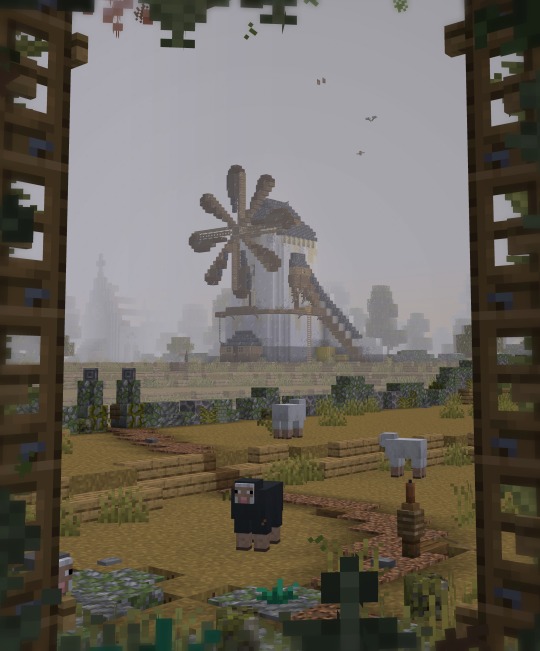
Misty sheepyard
#minecraft#minecraft art#art#minecraft build#minecraft builder#minecraft project#minecraft screenshots#project#minecraft house#minecraft house idea#windmill#mountains#nostalgia#nostalgic#nostaligiacore#childhood nostalgia#sheepyard#sheep#black sheep#animal#farm#farmcore#farm life#uk#united kingdom#scotland#countryside#trees#nature aesthetic#naturecore
4K notes
·
View notes
Text
"Abby Allen has no problem with her neighbours peering over her luxuriant hedges to see what she is up to on her farm.
For years she has been carrying out ad hoc experiments with wildlife and farming techniques; in her lush Devon fields native cattle graze alongside 400-year-old hedgerows, with birds and butterflies enjoying the species-rich pasture.
Under the environmental land management scheme (ELMS), introduced by the government in 2021, those experiments were finally being funded. “We have a neighbour who has always been more of an intensive farmer,” she says, but he is now considering leaving fields unploughed to help the soil. “It genuinely is having such a huge impact in changing people’s mindsets who traditionally would never have thought about farming in this way.”
The new nature payments scheme followed the UK’s exit from the EU, when the government decided to scrap the common agricultural payments scheme, which gave a flat subsidy dependent on the number of acres a farmer managed. In its place came ELMS, which pays farmers for things such as planting hedges, sowing wildflowers for birds to feed on and leaving corners of their land wild for nature.
But these schemes are now at threat of defunding, as the Labour government has refused to commit to the £2.4bn a year spending pot put in place by the previous Conservative government. With spending tight and the chancellor, Rachel Reeves, cutting back on infrastructure and hinting at tax rises, a cut to the ELMS scheme may be on her list.
However, government data released last week found the schemes were working to tentatively bring nature back to England’s farmland. Butterflies, bees and bats are among the wildlife being boosted by ELMS, with birds among the chief beneficiaries, particularly ones that largely feed on invertebrates. An average of 25% more breeding birds were found in areas utilising the eco-friendly schemes.
...there are also farmers who welcome the schemes. Allen says the ELMS has helped her farm provide data and funds to expand and improve the good things they were doing for nature. “Some of the money available around things like soil testing and monitoring – instead of us going ‘we think these are the right things to do and providing these benefits,’ we can now measure it. The exciting thing now is there is money available to measure and monitor and kind of prove that you’re doing the right things. And so then you can find appropriate funding to do more of that.”
Allen, who is in the Nature Friendly Farming Network, manages a network of farms in England, most of which are using the ELMS. This includes chicken farms where the poultry spend their life outside rather than in sheds and other regenerative livestock businesses...
Mark Spencer was an environment minister until 2024 when he lost his seat, but now spends more time in the fields admiring the fruits of his and his family’s labour. He says that a few years of nature-friendly agriculture has restored lapwings and owls.
“On the farm, I haven’t seen lapwings in any number for what feels like a whole generation. You know, as a kid, when I was in my early teens, you’d see lapwings. We used to call them peewits. We’d see them all the time, and they sort of disappeared.
“But then, me and my neighbours changed the way we did cropping, left space in the fields for them to nest, and suddenly they returned. You need to have a piece of land where you’re not having mechanical machinery go over it on a regular basis, because otherwise you destroy the nest. We’ve also got baby owls in our owl box now for the first time in 15 years. They look mega, to be honest, these little owls, little balls of fluff. It is rewarding.”"
-via The Guardian, August 23, 2024
#rewilding#nature#sustainability#endangered species#birds#wildlife#england#uk#uk politics#farming#sustainable agriculture#good news#hope
554 notes
·
View notes
Note
LLAMAAAAAAAA
WRITE MORE ABT FARMER (when you get the chance ofc)
AND MY LIFE IS YOURS!!!!
Your life. Hand it over
---
It was the thickest rain you’d ever seen. It didn't fall like normal rain, it fell in layers, great arcs of water that thrashed the ground one after the other, stormy waves hitting a shoreline. The roar of it landing on the world around you was almost deafening - a problem, considering it was three in the morning, and you were walking in almost pitch black. Any other night you would’ve been guided through the seemingly-endless farmland by recognising the hedges and hearing the animals... right now, you were guided only by the weakened blueish light of your headlamp, and the best that your memory had to offer.
You spotted it, in the near distance. The tiny light of another lamp was flickering back and forth in the rain, moving with the speed and efficiency of a hard-at-work man who couldn’t wait to get out of the terrible weather and go back to bed. You quickened the pace, marching down the field, your waterproof pants were coated in cold mud up to the calves; you were glad you couldn’t feel it. The only wet part of you was your face, and hands - you needed the latter out to hold the big metal flask you were carrying.
You didn’t mind the wet and cold. You stomped on regardless. All you cared about was the sight of that head lamp, getting closer and closer in the relentless wind and rain. You could just about make out the things he was looking at, illuminated by his lamp... the part of the fence he was doing his best to repair.
Before you knew it, you were within shouting distance. But there was no point, he wouldn't hear you. A particularly strong gust rushed across the field, you felt a carpet of rain hit you in the back, and the wind shoved you ungracefully forward. You let out a little yelp but managed to stop yourself from falling over.
... You heard your name over the rain. He had noticed you. You looked up - his headlamp was angled slightly downward, rather than straight ahead, so it didn’t dazzle you like you expected it to. Sans was dressed in his usual farm gear, his heavy boots and thick waterproof pants, and the rain had washed his green jacket cleaner than you’d ever seen it before. His hood was pulled securely up over his skull and he had a fence post the size of you in one hand like it was nothing.
... And he was looking at like he’d seen a ghost. It was rather comical.
“There you are!” You picked up the pace for the last few steps, jogging over to him, before you finally came to a stop. Phew, you’d been walking for almost five minutes in the storm. It felt good to finally see him. Despite the cold, you were pretty flushed from the exercise, hot under the combination of your sweater and coat.
“what the hell are you doing out here?” His green eyelights glowed under his hood, like two soft fireflies, a much more pleasant colour than the cold lamplight both of you were bathed in. It was as if only the two of you existed in the whole world... two headlamps in an endless sea of dark and wind and water. “it’s two in the morning,”
“Three, actually,” you chirped. It was somewhat hard to hear him over the rain hitting your hood, but you just stood a little closer to him. Your hurried breaths formed clouds, you could see them in the combined lamp glow.
He put down the fence post. It dropped with an heavy thunk. “did papyrus send you?”
You just held the big metal flask out to him. It had a black strap attached to the side of it that was sodden by now. He accepted it, seemingly out of instinct, staring down at it before glancing back up to you.
“... uh... thanks. what is it?”
“Soup!”
He blinked. “soup?”
“Yeah. I woke up to the rain, and I figured you’d be out here, because you’d mentioned the fence needed fixing properly before the storm hit." You pulled your coat sleeves over your now-free hands. "Though I did ask Papyrus if you’d actually headed out before I left. I’m not that crazy.”
He was still staring. The rain continued to roar, you had really hoped it would've eased up by now. But it seemed to be only getting worse. Probably for the best Sans was repairing the fence now, before everything completely flooded come morning.
“I know, I know," you continued when he didn't reply. "I’m dumb for going out in the rain, I’ll get wet. But I’m fine, see? I put the waterproof pants on over my boots, like you said. It’s been raining like hell and the only part of me that’s wet is my hands!”
“you... came out all this way, to bring me soup?” he said, softly. You almost didn't hear him.
“Yeah. Pumpkin soup. Knowing you, you didn’t eat anything before you left.”
He had gone quiet. That wasn’t like him. He was looking at you very intently, with great big eylights. Another gust of wind sent a wall of rain into the two of you. You visibly swayed, but Sans didn't seem affected by it.
Was he upset that you might get cold? He didn't look upset, his eyelights were so round, almost sparkly.
“I promise I’m not cold," you pressed. "This is the coat you lent me. See? It’s - ”
Sans moved forward a step. It was all he really needed to close the gap between you. He put an arm around you, despite the flask in hand, and swept you in against him; you were too startled by the sudden movement and proximity to move or do anything. His free hand came up, sliding between your coat hood and the side of your cheek, cupping your face.
He leant in and kissed you.
...
For a moment, you couldn’t hear the rain. You couldn’t hear anything at all. All you could think about was how smooth his hand was, how nice he smelled, how hard your heart was beating, and how warm he was. After so long walking around in the rain, being pulled in close to him felt incredible.
He felt so strong, too. All night, you'd been pushed around by any breath of wind, no matter the direction. In his arms? Nothing moved you. Nothing could shake you.
... Your eyes closed. Maybe it was the dark and gale and rain, maybe it was how early it was in the morning. But you just didn’t want him to let you go.
...
Sans pulled back. Your eyelids fluttered open again. There were raindrops on his skull, and the lamplight was dancing over his bones. His eyelights are such a pretty colour. He was looking at you like he wanted to pick you up and walk home with you.
...
Then, in an instant, the reality of what he just did appeared to hit him. So close to him, you could watch in real time as his eyelights shrank into pins in his sockets, and his smile twitched in what you could only describe as total internal panic.
... You, too, started to do the worst possible thing - think.
Sans just... kissed me. Sans just kissed me.
... You both just stared at each other, he was still holding you. You had no idea for how long. Sans’ eyelights kept flickering between your eyes and your nose, and you kept staring blankly at him, dazed and suddenly very confused.
...
“I-I should, head back,” you started, nervously.
“yeah. uh... yeah.” His hand came off your face, and he let go of your waist, stepping back again. You immediately missed the warmth. “thank you for the soup."
You nodded.
"i’ll..." He sounded shaky. He held onto the flask with both hands, maybe to stop himself from fidgeting. "see you later?”
"You too," you stammered.
... Wait. Shit.
No idea what else to say or do, you stood there like an idiot for a few seconds, trying to formulate something to say or some interesting witty way to turn that fuck-up into a joke and end the conversation - but you had absolutely nothing. Your head was spinning, your heart was still beating a mile a minute, you couldn’t believe that had really just happened. So you just turned right around and started walking.
...
Holy fuck, you thought, pulling your hood tight over your head. What the hell am I going to tell Papyrus?
#llama writes#this was a draft for ages and i just couldnt figure out how to set up the scene#but then a storm hit the uk and it was the perfect inspiration i needed#farm sans#papyrus is going to be VERY excited btw#hes been quietly shipping the two of you this whole time
231 notes
·
View notes
Text
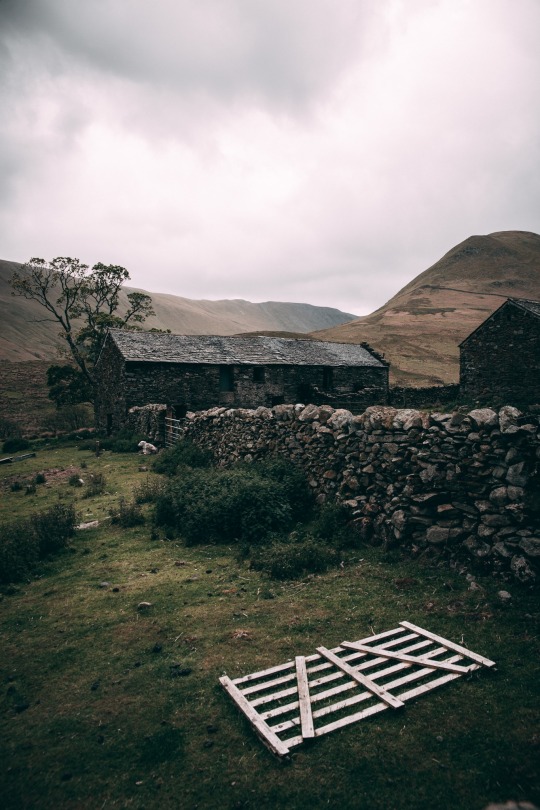
Cumbrian Decay
Photographed by Freddie Ardley - instagram
#photographers on tumblr#landscape#photography#artists on tumblr#art#nature#travel#beauty#england#uk#Cumbria#derelict#Lake District#mountains#farm
989 notes
·
View notes
Text
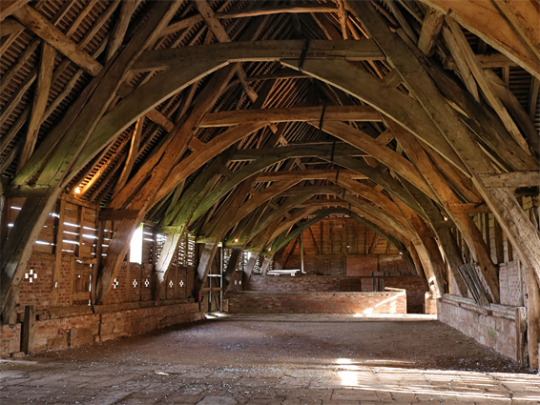
Few mediaeval barns are left in Britain, but Leigh Court endures..
#Leigh Court#Pershore Abbey#Worcestershire#Midlands#UK#mediaeval#oak beams#cruck barn#tithe barn#14th century#English farming#craftsmanship#agriculture#rural britain
186 notes
·
View notes
Text

Cockfosters, London; 1.5.2021
#photography#photographers on tumblr#dubmill#London#Cockfosters#England#UK#Britain#cricket#war memorial#original photography#original photograph#walk#Arnos Grove to Chase Farm Hospital#2021#01052021
109 notes
·
View notes
Text
“Under the most ambitious climate change mitigation scenario, food production is expected to decline by up to 25%,” the report reads. “Ambitious combinations of measures, including reducing food waste, using arable land to grow crops for direct human consumption rather than livestock feed (and thus implying a dietary change), and increased productivity on remaining farmland, could fully mitigate expected reductions in food production.” After the UK left the EU, farmers were no longer part of the Common Agricultural Policy subsidies scheme, which paid land managers according to the acreage they farmed. Instead the devolved nations have set up their own farming payments system. In England, this is the sometimes controversial Environment Land Management Scheme (ELMS), which pays farmers to make room for nature by letting hedges grow wilder, or sowing wildflowers for birds and bees on field margins. Anecdotally, farmers taking part in the schemes have noticed more wildlife, but until now no data has been available. The new government studies found that more mobile creatures, such as butterflies, moths and hoverflies, fared better when larger areas of land – a large farm or multiple small neighbouring ones – were involved in the scheme. Surveyed squares with high levels of eco-friendly schemes in the surrounding landscape had on average 117 more butterflies (a 53% increase), compared with the average for squares with low scores for schemes in the surrounding landscape. There were an average of 12 more moth species in areas with more eco-friendly schemes. Smaller, less mobile insects were boosted in smaller, more local areas signed up to the schemes. Numbers of barbastelle and Daubenton’s bats were also found to respond positively to eco-friendly schemes at the landscape level. Martin Lines, CEO of the Nature Friendly Farming Network, told the Guardian: “The evidence in the Natural England report confirms what many nature-friendly farmers are finding: delivering good-quality habitats, supported by public money, is helping to stop nature’s decline or even reverse it. Many farmers are pleased that their hard work is showing positive results, and with the support of well-funded ELMS, more farmers can deliver or help reverse nature’s decline.”
9 August 2024
94 notes
·
View notes
Text






Country lanes & meadows
Daniel Casson
#Llangollen#Wales#cumbria#lake district#uk#english countryside#farms#animals#sheep#cottage aesthetic#cottagecore#bohemian#curators on tumblr
1K notes
·
View notes
Text

Saughy Rigg - Michel Buylen.
Belgian, b. 1953 -
Oil on panel , 30 x 24 cm.
112 notes
·
View notes
Text
"When Francois Beyers first pitched the concept of 3D ocean farming to the Welsh regulators, he had to sketch it on napkins.
Today the seafood farm is much more than a drawing, but if you walked along the Welsh coastal path near St David’s, all you’d see is a line of buoys. As Beyers puts it: “It’s what’s below that’s important.”
Thick tussles of lustrous seaweed suspend from the buoys, mussels cling to its furry connective ropes and dangling Chinese lantern-esque nets are filled with oysters and scallops.
“It’s like an underwater garden,” says Beyers, co-founder of the community-owned regenerative ocean farm, Câr-y-Môr. The 3-hectare site is part of a fledgling sector, one of 12 farms in the UK, which key players believe could boost ocean biodiversity, produce sustainable agricultural fertiliser and provide year-round employment in areas that have traditionally been dependent on tourism.
Created in 2020 by Beyers and six family members, including his father-in-law – an ex-shellfish farmer – the motivation is apparent in the name, which is Welsh for “for the love of the sea”. ...
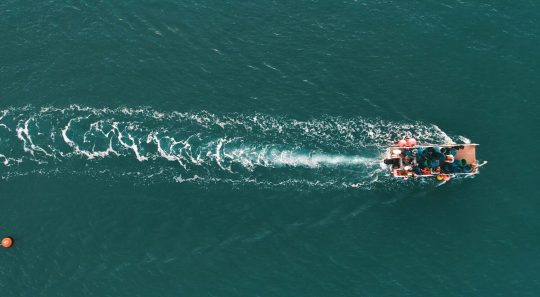
Pictured: Drone shot of Câr-y-Môr, which is on the site of abandoned mussel farms. Image: Scott Chalmers
Ocean farming comes from the technical term ‘integrated multi-trophic aquaculture’, which means a mixture of different seaweed and shellfish species growing together to mutually benefit each other. But it’s not just a way of growing food with little human input, it also creates ocean habitat.
“You’re creating a breeding ground for marine animals,” explains Beyers who adds that the site has seen more gannets diving, porpoises and seals – to name a few – since before the farm was established.
Ocean farms like Câr-y-Môr, notes Ross Brown – environmental research fellow at the University of Exeter – have substantial conservation benefits.
“Setting up a seaweed farm creates an exclusion zone so fishermen can’t trawl it,” explains Brown, who has been conducting experiments on the impacts of seaweed and shellfish farms across the UK.
Brown believes a thriving ocean farming industry could provide solutions to the UK’s fish stock, which is in “a deeply troubling state” according to a report that found half of the key populations to be overfished. “It would create stepping stones where we have safe havens for fish and other organisms,” he adds.
But UK regulators have adopted a cautious approach, note Brown and Beyers, making it difficult for businesses like Câr-y-Môr to obtain licenses. “It’s been a tough old slog,” says Beyers, whose aim is to change the legislation to make it easier for others to start ocean farms.
Despite navigating uncharted territories, the business now has 14 full-time employees, and 300 community members, of which nearly 100 have invested in the community-benefit society. For member and funding manager Tracey Gilbert-Falconer, the model brings expertise but most importantly, buy-in from the tight-knit local community.
“You need to work with the community than forcing yourself in,” she observes.
And Câr-y-Môr is poised to double its workforce in 2024 thanks to a Defra grant of £1.1 million to promote and develop the Welsh seafood industry as part of the UK Seafood Fund Infrastructure Scheme. This will go towards building a processing hub, set to be operational in April, to produce agricultural fertiliser from seaweed.
Full of mineral nutrients and phosphorous from the ocean, seaweed use in farming is nothing new, as Gilbert-Falconer notes: “Farmers in Pembrokeshire talk about their grandad going down to the sea and throwing [seaweed] on their farms.”
But as the war in Ukraine has caused the price of chemical fertiliser to soar, and the sector tries to reduce its environmental impact – of which synthetic fertiliser contributes 5% of total UK emissions – farmers and government are increasingly looking to seaweed.
The new hub will have capacity to make 65,000 litres of sustainable fertiliser annually with the potential to cover 13,000 acres of farmland.
But to feed the processing hub, generate profit and reduce their dependency on grants, the co-op needs to increase the ocean farm size from three to 13 hectares. If they obtain licences, Beyers says they should break even in 18 months.
For now, Beyers reflects on a “humbling” three years but revels in the potential uses of seaweed, from construction material to clothing.
“I haven’t seen the limit yet,” he smiles."
-via Positive.News, February 19, 2024
#wales#welsh#ocean#marine biology#aquaculture#marine life#marine animals#seaweed#sea scallops#oysters#united kingdom#uk#conservation#conservation news#overfishing#environmental news#farming#sustainable agriculture#sustainability#ocean farming#good news#hope
490 notes
·
View notes
Text









growing up in the english countryside <3
#calliesboards#age regression#sfw agere#agere#uk agere#uk#countryside#english countryside#northern england#middle space#middlere#kidre#teen regression#middle regression#farm
32 notes
·
View notes
Text
Process of building the Misty Sheepyard
#minecraft#minecraft project#minecraft build#minecraft builder#art#minecraft art#minecraft screenshots#project#minecraft house#minecraft house idea#windmill#mountains#nostalgia#nostalgic#nostalgiacore#childhood#childhood nostalgia#sheepyard#sheep#black sheep#animal#farm#farmcore#farm life#uk#united kingdom#scotland#countryside#trees#nature aesthetic
71 notes
·
View notes
Text
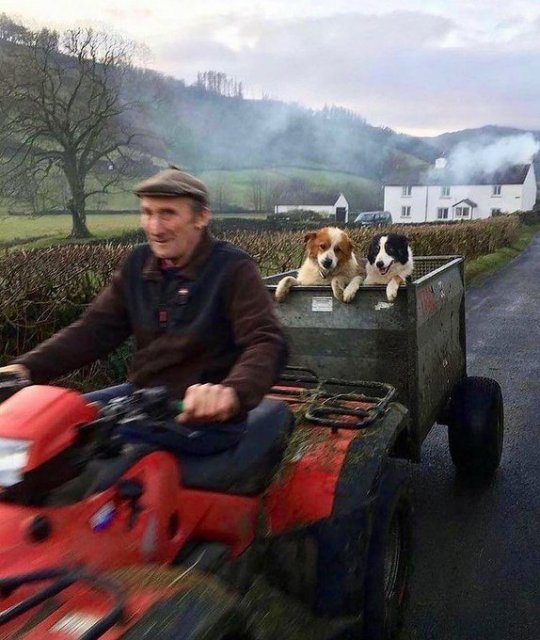
As with doctors, British farmers make their daily rounds too.
#English farmer#Lake District#English countryside#ATV#UK#trailer#pet dogs#all-terrain vehicle#farmhouse#rural britain#agriculture#food security#farming#hard work#dedication
276 notes
·
View notes
Text

#photography#nature#my photos#nature photography#photo#summer#grass#field#countryside#uk#rural#green#dusk#aesthetic#dark#camera#editing#photo edit#my photo#sky#rural gothic#rural area#seasons#tree#trees#land#farm land#farm#landscape photography#landscape
37 notes
·
View notes
Text
This is The Farming Left: these land workers share a politics, united by the concept of food sovereignty: the right to control of local food systems, which originated with farmers in the Global South. ‘We’re talking about equitable access to resources to enable localised food supplies’, explains Fernandes. These organisations are tackling the challenges of access to land in an unequal landscape: the Ecological Land Cooperative, for example, purchases large plots and obtains planning permission for dwellings before parcelling them up into affordable smallholdings. The Kindling Trust in Manchester is also seeking to foster a new generation of agroecological farmers. The Trust, which was established in 2007, has a veg box scheme and a community garden, and also offers training to new entrants, but there has always been a long-term plan to establish a cooperative farm. Since raising over a million pounds from more than six hundred investors last year, the Trust is looking to purchase a 120-acre farm in the Manchester area. ‘We want people to feel ownership in whatever way they get involved’, explains co-founder Chris Walsh. Whether they are founding members, workers, investors, or tenants, they will all be represented equally on a governing board. There ‘is a need for a rural radicalism’ of this kind, argues Chris Smaje, farmer and author of A Small Farm Future (2020). ‘It’s about trying to de-commodify land and take it out of speculative ownership’, he explains. For Smaje, who plans to purchase a 20-acre plot to be divided up among several small-scale farmers, the goal is ‘to build a land-based community’ and ultimately ‘generate more of what we need within our own communities’. While the radical agrarian community in the UK pales in comparison to the strength of conservative farming interests, this fight for land – and the right to use it – is happening on a global scale. The international peasants’ movement is connected through the 200-million strong La Vía Campesina, linking groups such as Brazil’s Movimento dos Trabalhadores Rurais Sem Terra (MST), or ‘Landless Workers’ Movement’, which has, since the 1980s, been occupying land to their counterparts across the world. The world’s farming Left is a David to big agribusiness’s Goliath, the latter having been bolstered by states, major international institutions, and the liberalising of global political economy since the Second World War. From Zapatistas to Scottish crofters, the peasants’ movement is fighting to turn the tide on our social and ecological future before it is too late.
86 notes
·
View notes